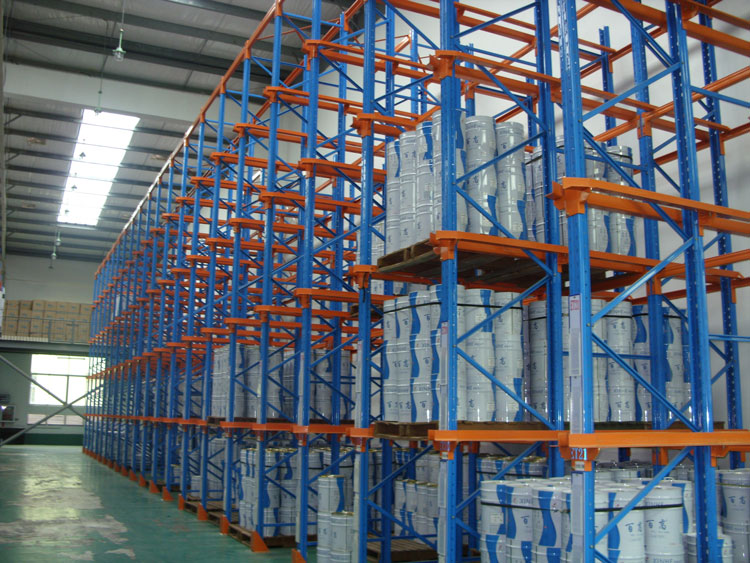Drive in racking allows forklifts (or unmanned transport vehicles with forks) to drive into the aisles to access goods, making it suitable for storage of items with a small variety and large quantities. For drive in racking, except for the storage positions close to the aisle, forklifts need to enter the racks to access goods, so it is generally recommended that single-sided picking does not exceed a depth of 7 storage positions.
To improve forklift operating speed, guiding tracks can be selected based on actual needs. Compared to beam pallet racking, the space utilization of drive in racking can be increased by more than 30%. Drive in racking is widely used in wholesale, cold storage, and the food and tobacco industries.
1. Low-temperature material adaptability
Steel selection:
Q235D steel is preferred, which has better low-temperature impact toughness than ordinary steel and can withstand -20℃ environment to avoid cold brittle fracture. The surface needs to be galvanized or sprayed, and the annual corrosion rate is controlled within 0.05mm to resist condensation water erosion.
Bolts and embedded parts:
Fasteners are recommended to use high nickel-chromium alloy steel to prevent low-temperature brittleness; the anchor depth of embedded parts is ≥150mm to ensure stability under freeze-thaw cycles.
2. Storage efficiency and structural design
Channel optimization:
Forklifts drive directly into the storage rack for operation, the channel width is compressed to 1.6-2m, and the storage density is increased by 30%-80%.
Storage and retrieval depth limit:
The single-side retrieval depth is recommended to be ≤7 cargo spaces, and the middle two-way storage and retrieval depth should not exceed 10 cargo spaces to ensure operational efficiency.
Layer height adjustment:
The height of the beam needs to support flexible adjustment (step length 50-100mm) to adapt to different cargo sizes.
3. Forklift coordination
Forklift selection:
Equipped with a fully electric forklift or a counterbalanced forklift, the hydraulic system needs to be adapted to low temperature environments, and it is recommended to configure anti-skid tires and guide rails for auxiliary positioning.
Operation mode:
Follow the “first in, first out” principle, combine with the WMS system to achieve batch management, and reduce the picking error rate to below 0.01%.
2. Cold storage adaptation optimization plan
Layout planning BIM modeling should be used to simulate storage rack arrangement and cold air circulation path, avoiding the air outlet of the air cooler46 Reduce local temperature difference and reduce energy consumption by 15%-20%
Enhanced stability Verticality error of columns ≤1/1000, horizontality error of beams ≤2mm/layer67 Prevent structural deviation caused by low-temperature deformation accumulation
Energy consumption balance storage racks are modularly combined, with ventilation gaps of ≥10cm reserved to optimize cold air flow distribution Cold air circulation efficiency is increased by 12%-15%
3. Typical application scenarios and limitations
Applicable scenarios:
Long-term storage of large quantities of small varieties of goods (such as frozen meat and dairy products);
High-frequency batch in and out of the warehouse, requiring forklifts to drive in directly for operation.
Limitations:
High requirements for consistency of goods specifications, not suitable for multi-category mixed storage scenarios;
Storage rack height is usually ≤10m, and it is recommended to use a storage rack-integrated structure for ultra-high cold storage.
Post time: May-09-2025

